Scene Deconstruction with Adriano Goldman, BSC, ASC, ABC
Deconstructing key scenes from the acclaimed Disney+ series: Star Wars: Andor.
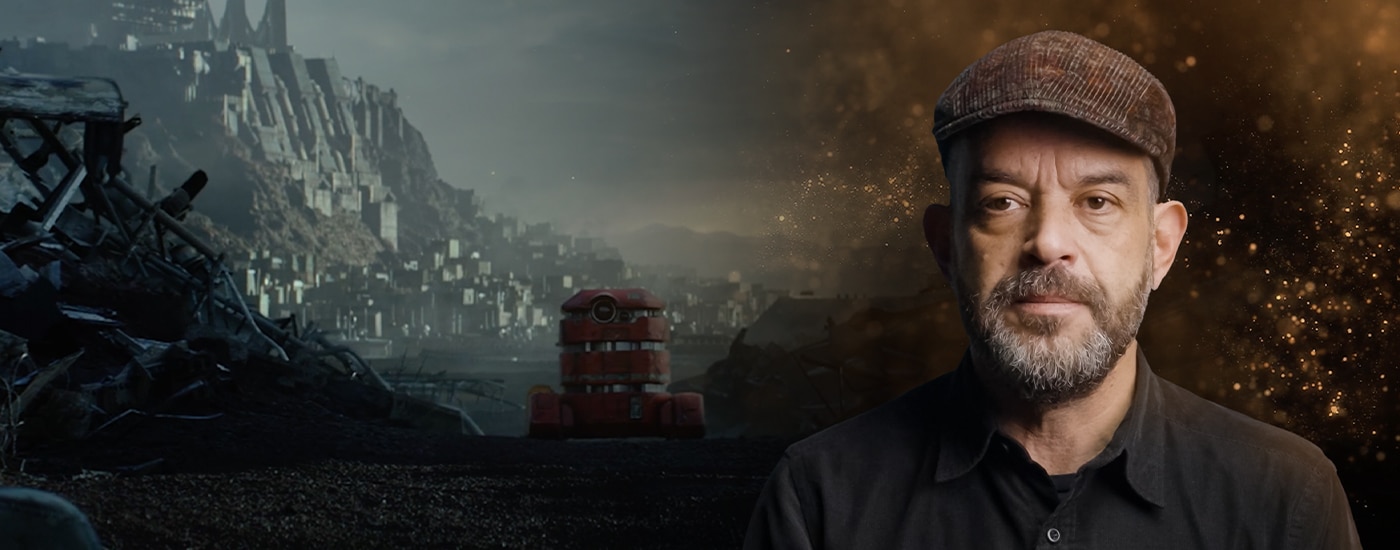
Introduction
Adriano Goldman is a Brazilian director and cinematographer who has won multiple awards, including two Primetime Emmy Awards for his work on The Crown. In 2022, he worked as the DoP on the acclaimed Disney+ series Star Wars: Andor – a prequel to Rogue One (2016). The series tells the story of eponymous Cassian Andor as he reluctantly becomes involved in the struggle against the tyrannical Galactic Empire.
Andor was shot using Sony VENICE cameras. According to Adriano, the starting point for the look of Andor came from Rogue One, however they decided to place more emphasis on traditional physical sets rather than virtual production. For Adriano, the use of physical sets made shooting Andor feel more like a location shoot, which is his preferred way to shoot as he loves using either real light sources or light sources that feel genuine and motivated.
Scene Deconstruction: Key Insights
- Building your lighting into a set as practical lights gives a very naturalistic look, while a single control panel allows for quick adjustments to suit different types of shots.
- Creating a computer-generated virtual set and using goggles to interact with and move around inside this virtual set allows you understand the size and scale of the set and to plan your lighting strategy before the set is built.
Cassian and Bix Scene
The first scene Adriano deconstructs for us features the characters Cassian and Bix. The scene takes place in a dark interior workshop space that looks out onto a very bright exterior. This was a specially constructed set. The characters are inside the workshop and almost completely silhouetted against the bright exterior background. The exterior was primarily lit by natural sunlight, but an additional HMI light on a cherry picker was used to bring additional daylight-balanced light into the interior space to enhance the backlit look. Then, at the inner end of the interior space where the dialog between the characters takes place, several warm practical lights were placed on the walls of the set.

These warm lights then gently illuminate the faces of the characters in the scene, producing a high color contrast between the faces lit by the warm interior lights and the coolness of the daylight outside.
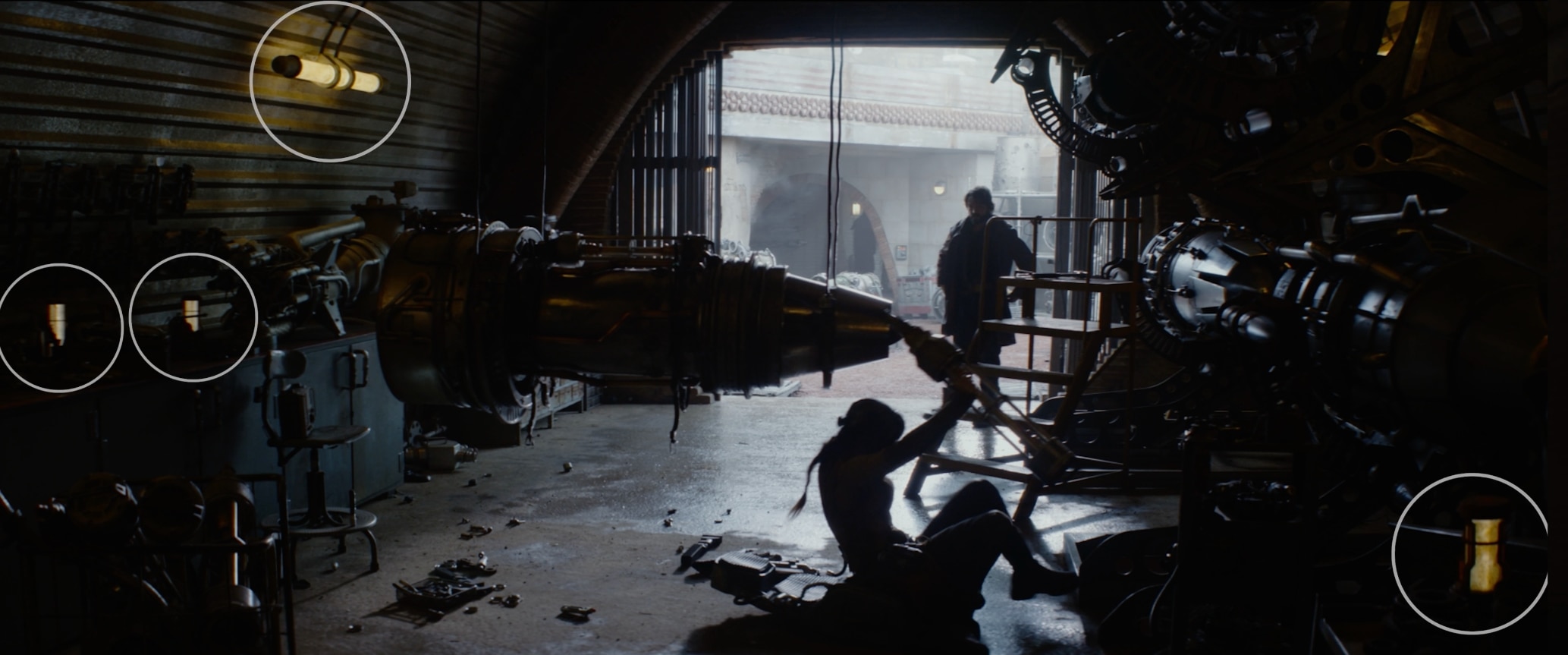

Syril Scene
Syril Karn is a Preox Morlana Security Inspector who is tasked with tracking down Cassian. The scene was shot on location in a building interior. The building has huge sloping windows. To complete the look of the scene, large additions were made to the location, such as a large control panel added to the ceiling and banks of monitors and control stations along the length of the space.


To create a convincing sense of sunlight coming in through the large windows, a 200000 W “Soft Sun” light was used. By using a single extremely bright light source, the well-defined and sharp single shadows cast on the walls appear realistic and true-to-life. Then, for close-up character shots, Adriano used a large silk diffuser to diffuse and soften the light falling on the actors and, at the same time, an LED spider light to add an eyelight.
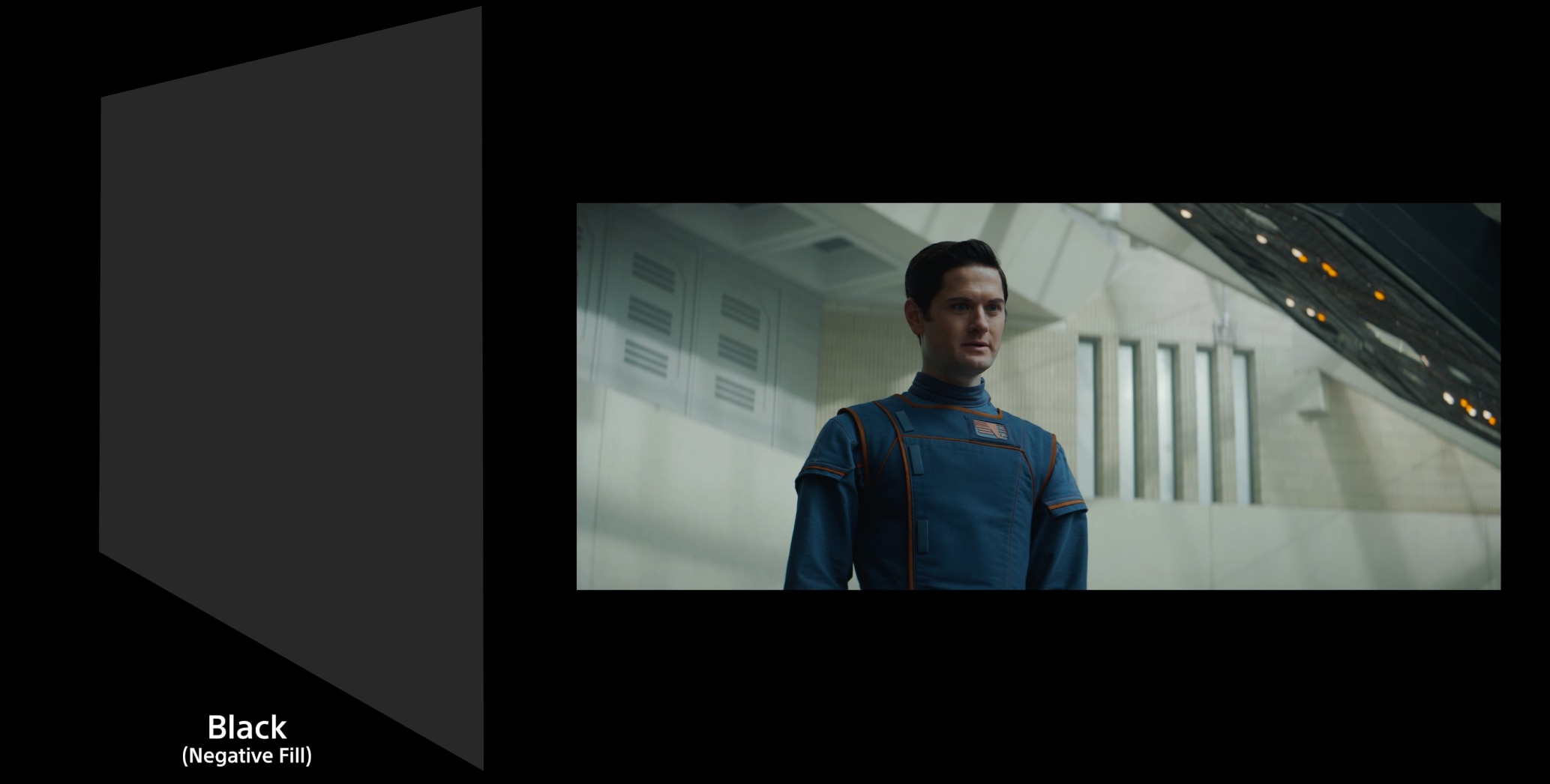
In addition, to increase the contrast, negative fill, such as black drapes or black flags, was used opposite the light source to minimize and control light bounce, helping to darken the sides of faces away from the lit side. Adriano feels that negative fill is important when shooting in very bright spaces.
Prison Scene
The prison manufacturing facility is one of Andor’s most memorable locations. All the lighting for the scene was built into the set. So, the light that falls on the characters comes from these visible practical lights, which are all controlled from a central control panel.
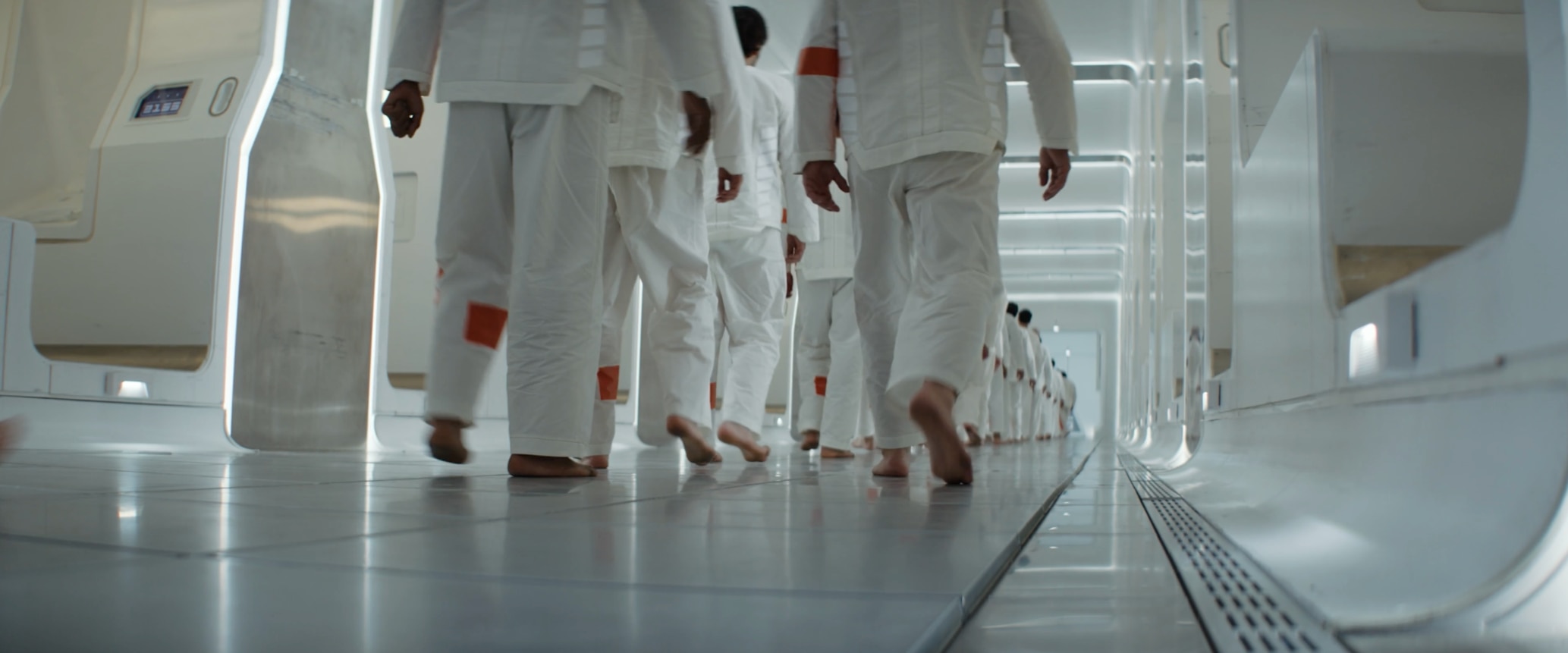
Instead of using negative fill to enhance contrast for tight shots, Adriano was able to use the control panel to turn off or dim the lights in parts of the set to enhance the contrast.

Adriano also talks about how the floor of this set was quite fragile and could be bent or damaged by heavy equipment such as camera dollies, so to create dolly shots extensive use was made of a Steadicam, which was lighter and didn’t damage the floor.
Preparation
Adriano says that when you do your preparation for a period or contemporary production everything you need is already there – you can go to your location and look at the furniture, look at the costumes, the cars, the colors and the textures. But when he started his preparations for Andor, nothing had been built. So, he worked with the production’s VFX team who created a virtual location that you could look at and move around in using googles. This was useful for understanding the scale of the set and how bright it should be. This helped to develop lighting strategies and figure out how many fixtures would be needed, allowing the preparation to be very thorough.

Working with the director, Toby Hayes, it was determined that the pace and flow of the first episode should be very composed and that there should be extensive use of dollies and tracks for smooth and gentle movements. Then, as the action and tension increases in episodes 2 and 3, the shooting rhythm was sped up. By episode 3, almost everything was shot handheld. In the later episodes, the whole pace and rhythm changes so that it becomes more like an action movie compared to earlier episodes.
To start with, Adriano was concerned about needing to use interactive lighting to simulate the light from weapons firing or weapon blasts. But once he started working with the very highly skilled Star Wars special effects team, he discovered that they would take care of this, and he didn’t need to worry about them.
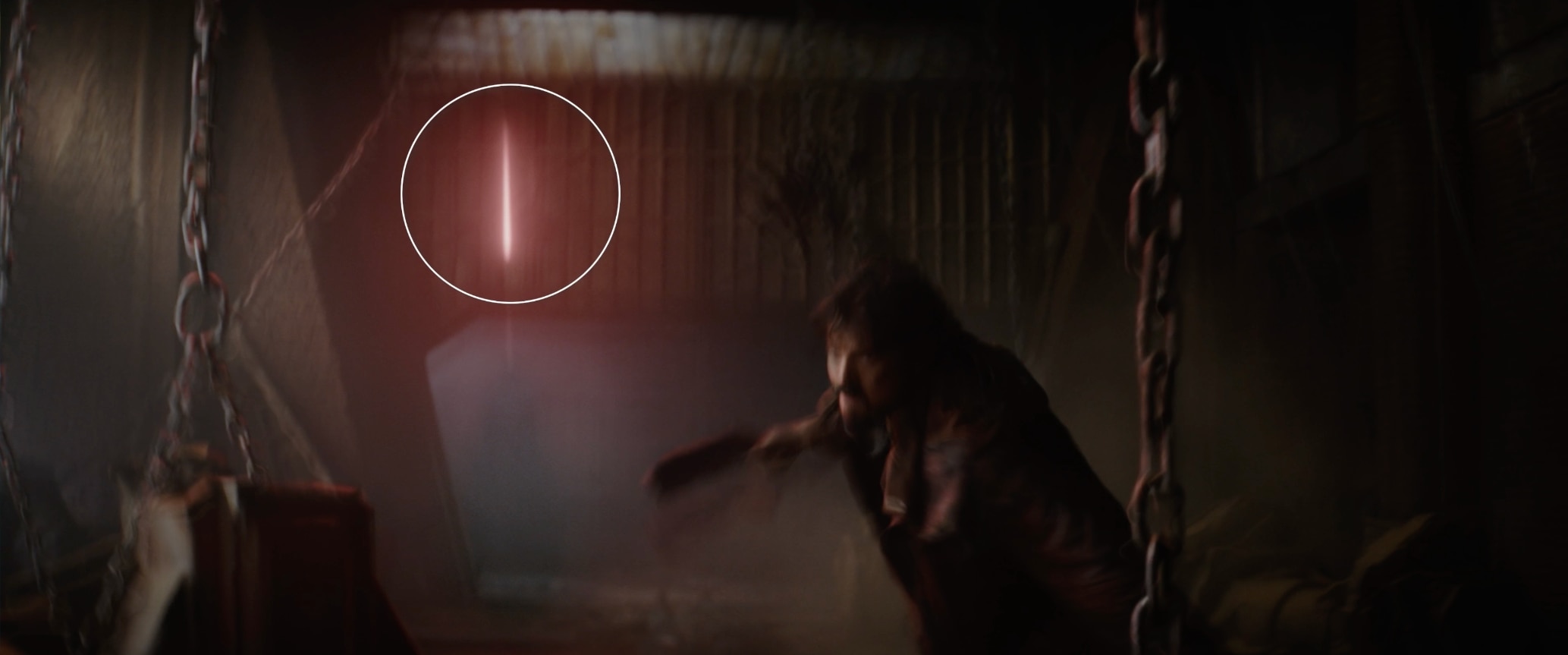
In the image above, you can see not only the laser beam from the weapon but also the glow that surrounds it, all added by the Star Wars visual effects team.





